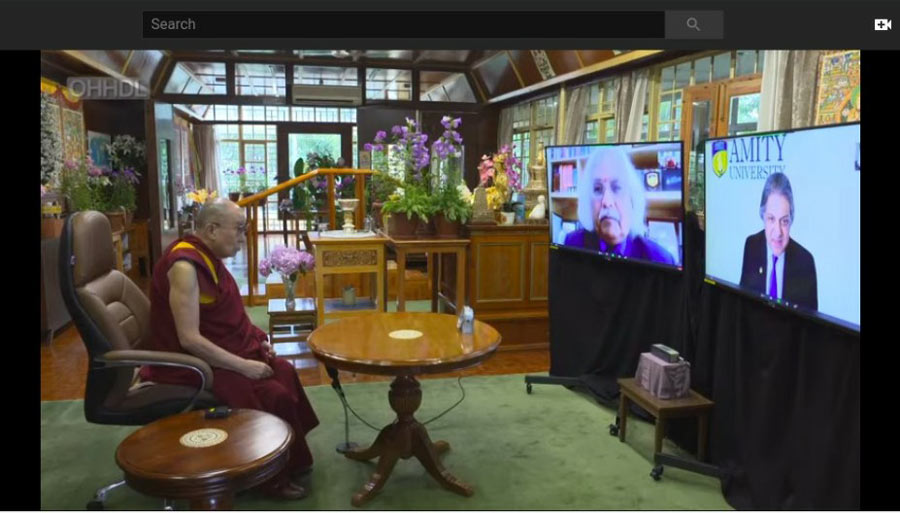Remote Warfare: Democracies, Risk Aversion & Military Engagement:
An advance preview from the forthcoming book Remote Warfare: Interdisciplinary Perspectives (E-International Relations 2020)
Liberal Western democracies are increasingly resorting to remote warfare to govern security threats from a distance. From the 2011 NATO-led bombings in Libya, the US Africa Command training Ugandan soldiers to fight al-Shabaab, or the US-led coalition against IS in Syria and Iraq, violence is exercised from afar. Remote warfare is characterised by a shift away from ‘boots on the ground’ deployments towards light-footprint military interventions. This may involve using drone and air-strikes, special forces, intelligence operatives, private contractors, and training teams assisting local forces to do the fighting, killing, and dying on the ground (Demmers and Gould 2018: 365; Watts and Biegon 2017: 1).
Violence is thus exercised without exposing Western military personnel to opponents in a declared warzone under the condition of mutual risk. This chapter aims to understand why we see this shift to remote warfare and reviews the moral and political challenges that this new way of war has given rise to. Our key argument is that the secrecy around remote warfare operations, their portrayal as ‘precise’ and ‘surgical’, as well the asymmetrical distribution of death and suffering they entail, thwarts democratic political deliberation on contemporary warfare. We foresee that it is these qualities of remote warfare that will make Western liberal democracies more war prone, not less. This is the remote warfare paradox: the military violence executed is rendered so remote and sanitized, that it becomes uncared for, and even ceases to be defined as war.
To empirically illustrate these points, we start with two vignettes. The first highlights how ‘war’ was taken out of the air-strike campaign in Libya in 2011.
In 2011, when NATO bombs were dropped on Libya, U.S. President Obama faced a dilemma: would he have to end US airstrikes after the sixtieth day, as required by the War Power Resolution? The War Powers Resolution (WPR) is a 1973 law that orders the president to withdraw US forces from ‘hostilities’ within 60 days in the absence of congressional authorisation. It was clear at the time that Congress had little interest in supporting the intervention in Libya with a war declaration or statutory authorisation.
In response, White House lawyers crafted a legal rationale that allowed Obama to bypass the WPR predicament. The Libya war did not ‘rise to the level of hostilities’, they concluded, because military engagement was limited by design, conducted without the involvement of US ground forces, and therefore free of any risk of friendly casualties. The lawyers’ report asserted that ‘US operations do not involve sustained fighting or active exchanges of fire with hostile forces, nor do they involve the presence of US ground troops, US casualties or a serious threat thereof (…)’ (US Department of State 2011).
By placing U.S. airstrikes outside the realm of hostilities as envisioned by the WPR, it was argued that Obama did not need Congressional authorisation to engage in an offensive mission involving sustained bombardments of a foreign government’s forces. With this argument, the Obama administration set a precedent, drawn upon by his successor, that consistent bombing does not rise to the level of ‘hostilities’ (Olsen 2019). In 2019, the Trump administration was easily able to claim that US support for the Saudi-led coalition in Yemen—merely refueling jets and intelligence sharing, well short of direct airstrikes—does not constitute hostilities.
Our second vignette shows another dimension of remote warfare: here, too, a Western democracy is waging remote war, but here the remoteness entails an ‘outsourcing’ that is shrouded in secrecy.
In 2015, the Dutch parliament authorised the Ministry of Foreign Affairs to provide non-lethal support to militias fighting the Islamic State and Assad in Syria. This permission was granted under the conditions that only ‘moderate’ groups with respect for international humanitarian law would be assisted; support would be terminated immediately if this proved not to be the case, and the parliament would be given frequent updates about the programme.
In 2018, newspaper Trouw revealed that the Netherlands had supported over 22 militias by providing them with 25 million euros worth of pick-up trucks, laptops and uniforms. Trouw also exposed that this support had been used for ‘lethal’ ends and the Ministry of Foreign Affairs was well aware that a number of these militias were human rights abusers (Dahhan and Holdert 2018).
The Dutch Public Prosecutor had even labelled one, Jabhat al-Shamiya, as a terrorist organisation. The parliament was shocked by these revelations; however, in response the Ministry of Foreign Affairs labelled the programme as ‘classified,’ thereby ruling out public, political and legal enquiry.
These vignettes illustrate how removing Western military personnel from the theatres of war through airstrikes or the financing of local militias and framing these distant engagements as ‘non-hostile’, ‘non-lethal’ or ‘classified’ offers room for governments to bypass domestic public scrutiny and political debate. Aiming to explore this ‘depoliticization move’ in more detail, we do three things in this chapter.
First, in order to set the larger picture, we explore three reasons to explain the turn to remote warfare: the desire for leaders to avoid the risks associated with warfare, the rise of technological developments, and the networked character of modern warfare. Second, we highlight how these debates fail to address the transformative nature of remote warfare, namely that it allows Western states to wage bloodless wars, while transferring the risk of death and suffering to local populations. This raises the question of whether Western democracies will ‘care’ enough to restrain the wars waged in their name. In the third section, we investigate the answer to this question by highlighting how watchdogs and human rights organisations such as Airwars and Amnesty International try to make Western publics and parliaments ‘care’ by publicising the local human suffering caused by Western airstrikes. In the conclusions, we come back to the ‘paradox of remote warfare’ and the challenges that remote killings present to the politics of war: both to public scrutiny and political decision-making.
Explaining the turn to remote warfare
Why do we see this turn to ‘remote’ interventionism? And why now? Aiming to capture the ‘new newness’ of interventionism, scholars and specialists have coined a range of terms. We see labels popping up such as ‘globalized war’ (Bauman 2001) ‘coalition proxy warfare’ (Mumford 2013); ‘transnational shadow wars’ (Niva 2013); ‘surrogate warfare’ (Krieg & Rickli 2018), ‘vicarious warfare’ (Waldman 2018), ‘liquid warfare’ (Demmers & Gould 2018) or, simply ‘remote warfare’ (Biegon & Watts 2017). If we look beyond the labels, however, we notice how authors largely rely on three formats (or genres) to explain the shift to what is considered a new way of war: democratic risk-aversion, technology, and networking.
Democratic risk-aversion
Authors grouped within this genre point at the appeal of remote technologies of warfare. They argue that democracies, in particular, turn to remote warfare as a way of risk-aversion. Simply put, decision makers in democracies fear losses among their own constituencies more than authoritarian leaders, because rising numbers of casualties will have adverse effects on public support and decrease their chance of re-election (Freedman 2006, 7). For one, remote technologies such as unmanned systems give human soldiers the best possible force protection: they are not exposed to the enemy at all. Grounded in classic liberal thought, and often referring to Immanuel Kant’s notion of perpetual peace, this strand of thinking sees the ‘no body bags’ call of the electorate in liberal democratic societies as restraining politicians from engaging in high-risk warfare. In his famous treatise, Kant ([1795] 1957, 12-13) provided an important insight on the risk aversion of democracies. Here he argued that when those who decide to wage war are obliged to fight and bear the costs:
(…) they would be very cautious in commencing such a poor game, decreeing for themselves all the calamities of war. Among the latter would be: having to fight, having to pay the costs of war from their own resources, having painfully to repair the devastation war leaves behind, and, to fill up the measure of evils, load themselves with a heavy national debt that would embitter peace itself and can never be liquidated on account of constant wars in the future (our emphasis).
Remote warfare, in many ways, helps overcome this problem of ‘costs’, both in terms of human lives and expenditure. The end of conscription in Western democracies, with Vietnam as an important turning point, already formed a first step of transferring risks to military professionals. But with the emergence of remote technology wars can now be fought from a distance: allowing for zero-risk warfare. Soon after the invasion of Iraq, Martin Shaw (2005) in his book on the ‘new western way of war’ argued that liberal democracies aim to ‘transfer the risks of war’ even further: away from their own professional soldiers to the civilians and armed actors of ‘the enemy’. In liberal democracies, warfare has become primarily an exercise in risk-management. For Shaw, this explains the strong preference for long-distance air strikes and drones, instead of military interventions with ground troops. In a similar vein, Coker (2009) and, more critically, Sauer and Schörnig (2012) refer to ‘war in an age of risk’, and ‘democratic warfare’ to highlight how democratic institutions and their publics are the central factors constituting the turn to remote warfare.
Technology
The role of technology, and particularly the turn to military robotics and autonomous weapons, figures prominently in the second explanation of remote warfare. Although the relation between technology and war is an old one, the recent revolution in military technology and the emergence of a ‘military-tech complex’ is seen by some to be the main driving force behind remote warfare. Unmanned aerial vehicles (or drones), in particular, offer unprecedented possibilities to wage war from a distance. In addition to being seen to ‘save lives’ of both military personnel and civilians ‘on the ground’ and reduce costs, these systems offer numerous advantages to the military. As pointed out by Sauer and Schörnig (2012, 363): ‘Machines can operate in hazardous environments; they require no minimum hygienic standards; they do not need training; and they can be sent from the factory straight to the frontline, sometimes even with the memory of a destroyed predecessor.’ Within International Relations, a new subfield of drone studies has emerged, with a strong emphasis on materiality, the politics of ‘things’, the agentic capacity of drones, the absence of human bodies, and the ‘ethics of killing’ (see: Holmqvits 2013; Schwarz 2016; Wall and Monahan 2011; Walters 2014; Wilcox 2017). Scholars working from the field of political economy have added to this second explanatory genre by pointing out how we have entered a new, and highly profitable arms race, with tech corporations such as Microsoft, Amazon, Palantir and Anduril feeding the remote war machine. The basic viewpoint here is that artificial intelligence, autonomous systems, ubiquitous sensors, advanced manufacturing, and quantum science will radically push for, and transform, remote warfare.
Networking
A third, and equally prominent, genre refers to the key importance of the networked nature of contemporary warfare. Ever since the publication of Stanley McChrystal’s 2011 article in Foreign Policy, the notion that ‘it takes a network to defeat a network’ has become somewhat of a standard, in both military and academic analysis (McChrystal 2011). Simply put, the argument goes that because the ‘enemies of the state’ are now operating through shadowy networks and cells, the state must resort to similar tactics. Reflecting upon this, Niva (2013) emphasizes how US wars, legitimized by the War on Terror, have become increasingly ‘networked’, calling them ‘transnational shadow wars’. While recognizing the role of military robotics as an essential tool, he contends that the central transformation enabling remote warfare has less to do with new technologies and more to do with new forms of social organization – namely, ‘the increasing emergence of network forms of organization within and across the US military after 2001’ (2013: 187). In these new forms of ‘counter-netwars’ hybrid blends of hierarchies and networks, consisting of special operations forces, intelligence operatives, and private military contractors, have mounted strike operations across shadowy transnational battle zones (2013: 187). During the 2010s, this hybrid warfare has mutated to heavily rely on what is called ‘security cooperation’. Herein, small (private) military teams train, equip and advise local forces to do the fighting and dying on behalf of Western ‘boots on the ground’ (Biegon & Watts, 2017). What is in fact implied in this final genre is that remote warfare results from the state mimicking its enemies.
Perpetual warfare
Although the above debates each provide important insights, they need to be combined to create a comprehensive, multifactor explanation. Whereas we see democratic risk aversion as the key driver behind the Western turn to remote warfare, this new way of war also heavily depends upon technological advancements, political economies, and the outsourcing of the burden of war to private and distant others. What the above debates—even if combined—fail to address, however, is the more fundamental question on the transformative capacity of violence. That is, on how this new type of war is able to (re)work relations of power, order and politics. In thinking through the main moral and political challenges that remote warfare has given rise to, our concern with the proliferation of this type of violence lies in its normalization of the asymmetrical distribution of death and suffering. Returning to Kant’s famous words remote warfare presents us with a paradox: if indeed remote technologies help to overcome democracies’ casualty-sensitivity, and if ‘bloodless war’ (Mandel 2004) becomes a reality, will these democracies then not become less ‘cautious’ in commencing the ‘poor game’ of war? Or as Michael Ignatieff (2000: 4) phrased it in 2000 after the NATO bombings of Serbia and Kosovo—the first riskless war in history- ‘if war becomes unreal to the citizens of modern democracies, will they care enough to restrain and control the violence exercised in their name?’. With zero direct risks and no returning body bags, we foresee that the perpetual peace doctrine will come to facilitate perpetual war.
Counting the bodies of the dead
Let us take a closer look at the manufacturing of the ‘lack of care’ that remote technologies facilitate: how have western publics responded so far? On a positive note, we have witnessed the advent of a set of Western civil society organisations that monitor the local impact of remote warfare interventions and demand transparency and accountability for its harmful effects. Not satisfied with how Western militaries assess the number of civilians killed by their airstrikes through relying on internal visual military intelligence recorded from the sky, organisations such as Airwars, Amnesty International, and Human Rights Watch, have developed new remote sensing techniques to count the number of civilian casualties from Western airstrikes. They use open sources intelligence (such as social media posts and satellite imagery) to track, triangulate, and geolocate, in real-time, local claims of civilian casualties. Concurrently, they monitor and archive official military reports on munition and strike statistics to measure them against the public record and grade the reliability of the claims made. In some cases, this is augmented by investigations on the ground.
The underlying assumption driving these initiatives is that publics do care, but simply need to be informed. If Western publics and parliaments are provided with systematic real-time evidence of the devastating effects of remote interventions for the civilians besieged, they will press their governments to constrain this way of war. An illustrative example is how Amnesty International and Airwars joined forces to monitor the impact of the 2017 US-led bombing campaign to retake the Islamic State-held city of Raqqa in Syria.
In the four-month remote Battle for Raqqa (June – October 2017), the US, UK and France fired over 40,000 air and artillery strikes that were called in by their local allies the Syrian Democratic Forces.[1] In the immediate aftermath of what was coined by the US Defence Secretary James Mattis as a ‘war of annihilation’, the Coalition acknowledged just 23 civilian casualties, yet refused to conduct any investigations on the ground. In response, Amnesty International and Airwars set up an innovative crowdsourcing data project called Strike Tracker.[2] This online project engaged over 3000 digital activists from across 124 countries to help them trace and geolocate how the coalition’s bombings destroyed almost 80 percent of Raqqa. Drawing evidence from social media posts, two years of on-the-ground investigations, and expert military and geospatial analysis, they then built a database of more than 1,600 civilians reportedly killed in Coalition strikes, of which they were able to name 641. For the war as a whole, the US led anti-ISIS coalition engaged in over 34,000 strikes, firing over 100,000 munitions across Syria and Iraq from 2014 onwards. The resulting death toll is staggeringly different: Airwars estimate a minimum of between 8,214 and 13,125 civilian deaths, while the Coalition acknowledges 1,335.
Killing with care
This painstaking and often harrowing evidence-based monitoring work illustrates that some people in Western democracies obviously care. We, however, observe that representatives of the US-led coalition also take great care to effectively thwart the critical counterclaims made by these watchdogs and human rights organisations on the human suffering caused by their airstrikes. We identify three ways in which this occurs. First, we see a lack of international media coverage of the numbers produced, but also, and secondly, an outright denial by official sources. Third, and closely related, Coalition partners are quick to justify their own violence using classic war tropes.
In contrast to Western media’s nearly daily reporting and moral outcry over Russia’s remote bombardments in Aleppo or Idlib, there was hardly any real-time coverage of the Coalition’s bombing of Raqqa (see O’Brien 2019). Two years after the fact, most major news outlets (including CNN, BCC and Reuters) did pay lip service to the 1600 body count. All reports, however, quoted the Coalition spokesperson’s acknowledgement of just 159 of these allegations (thus denying the other 90 percent) and his justification:
Any unintentional loss of life during the defeat of [IS] is tragic. However, it must be balanced against the risk of enabling [IS] to continue terrorist activities, causing pain and suffering to anyone they choose. The coalition methodically employs significant measures to minimise civilian casualties and always balances the risk of conducting a strike against the cost of not striking.[3]
If we zoom out, we see here that remote wars, like all wars, do not remain insulated from the machinations of propaganda. War is a high-stakes enterprise and public perceptions and public support are never left to chance (see Griffin 2010). Remote warfare is shrouded in denial and secrecy. Still, governments strive to justify their ‘distant wars’, while journalists often toe the party line to avoid being named unpatriotic or being ‘blocked out’ from powerful and official sources. It is these pressures and considerations which often result in a news diet of steady and highly standardized portrayals.
For the case of Operation Inherent Resolve, those in favour contrast the brutal and barbaric violence perpetrated by Islamic State (ISIS) with the surgical precision with which its strongholds were targeted. This distinction between ‘their’ violence as vicious and barbaric and ‘our’ violence as clean and precise fits the classic tropes of war. Such statements suggest a good deal about how we like to understand our own violence. They establish a highly appealing contrast between borderland traits of barbarity, excess and irrationality, and metropolitan characteristics of civility, restraint and rationality (see Duffield 2002: 1052). In reaction to Airwars’ high civilian body count, coalition commander Stephen J. Townsend, for instance, claimed: ‘Assertions by Airwars (…) and media outlets that cite them, are often unsupported by fact and serve only to strengthen the Islamic State’s hold on civilians, placing civilians at greater risk’. Townsend emphasized that the Coalition dealt in facts and that he challenged anyone to find a more ‘precise air campaign in the history of warfare ….The Coalition’s goal is always for zero human casualties’ (2018).[4] Or, as Former US Defense Secretary James Mattis emphasised: ‘We are the good guys… We do everything humanly possible consistent with military necessity, taking many chances to avoid civilian casualties at all costs’ (2017).
Such statements not only undermine the authority and legitimacy of the monitoring organisations, but they repeatedly point out how the constant application of new smart technologies and proportionality principles allow for a new form of perfect warfare, which saves lives of both Western military personnel and friendly civilians on the ground.
Conversely, critical voices point out the dangers of these forms of ‘ethical killing’ (Schwarz 2016) or ‘humanitised violence’ (Bonds 2018). They take issue with what they see as the production of a new type of ethical proposition that, paradoxically, presents ‘killing as a moral act of care’ (Chamayou 2015, 139). By framing acts of military violence in medical terms (‘surgery’, and ‘precision’), we are made to imagine we are killing with care, and it then becomes hard to care for those who are killed carefully. This sanitisation directs our attention away from what is essentially a political act; coalition state violence needs to be accounted for, both legally and politically. Why was the operation launched in the first place? What was the international legal mandate to do so? And if indeed the bombings are legitimised as ‘collective self-defense’, is this how Western democracies best protect their own and local citizens against armed attacks? What are the boomerang effects of destroying 80 percent of a city with ‘utmost precision’? And, more complicatedly, and painful perhaps, why and how was ISIS able to emerge? How was the West involved in creating the conditions for ISIS’s explosive success? We acknowledge that directly addressing particular wars and militarism is intensely political.
These questions therefore require careful analysis, consideration and open debate. In this, we need to move beyond discourses of precision and sanitisation. For Chamayou, ‘precision killings are still killings’ (2015, 140). Or as Hannah Arendt argued much earlier: ‘Politically, the weakness of the argument has always been that those who choose the lesser evil forget very quickly that they chose evil’ ([1964] 2003, 36-37).
Conclusion
Let us be clear: we do not argue for more Western body bags or more boots on the ground. What we emphasise in this chapter is the need to ‘make strange’ the evolving normalisation of remote warfare as the lesser evil: as precise, efficient wars of necessity. Western democracies have largely removed their military from the theatres of war. And as we saw in the opening vignettes, Western soldiers thereby no longer engage in ‘hostilities’ directly. But this does not make them any less violent.
Apart from ‘making visible’ the direct suffering caused by remote warfare, we aim to think through the transformative effects and moral and political challenges that this new way of war has given rise to. Key to the continuation of remote warfare, in addition to the secrecy of its operations, and the sophisticated propaganda of precision and care, is its asymmetrical distribution of death and suffering. As we have seen in the above, zero-risk warfare is compelling to those not at the receiving end of the violence. Altogether, we conjecture this to translate into liberal democracies becoming not less, but more, war-prone. That is the paradox of ‘democratic warfare’, and herein, we argue, lies its transformative effect. The violence is executed so remotely, that it becomes invisible, uncared for, and even ceases to be defined as such.
A second concern is blowback. The challenges that remote killings present to the logic of warfare also have serious political implications. As pointed out by Ignatieff (2000) and Sauer and Schörnig (2012), the riskless setup of remote warfare could very well justify a mirroring of ‘remote’ ways of fighting in the form of terrorist attacks by the enemy as the only possible way to retaliate in the absence of a ‘fair’ fight. As for the secrecy of remote violence, one thing is clear: in this age or digital media everything is seen, filmed, and shared. Violence always has a boomerang effect.
In sum, outsourcing the violent act to robotic, private or surrogate others has silently taken political deliberation out of contemporary warfare. As a consequence, this has lowered the threshold for military engagement in liberal democracies. We need to bring politics, and the public, back in. Although this evidently entails a much wider and more profound discussion, we here conclude by making two suggestions. What we can detect from our opening vignettes, is that, for a start, the new strategies for military engagement that come with remote warfare have to find a reflection in new political decision-making procedures. Any form of military intervention, whether offensive or defensive, that results in acts of physical harm on the ground should eventually be put through careful parliamentary scrutiny (such as, for the case of the US, the War Powers Resolution). This is what ‘engaging in hostilities’ should mean: inflicting harm to enemy combatants or civilians. Second, more analysis, dissemination and debate on the intimate realities of remote warfare is needed. Hopefully, this contribution has provided some useful insights into that direction.
And finally, Western democracies’ claims to the moral high ground in respect to the brutality of war are uncalled for. All war is terrible, whether it is executed by a soldier piloting a weaponised drone or an insurgent’s improvised explosive device. There is no such thing as sophisticated violence.
Bibliography
Arendt, Hannah. [1964] 2003. Responsibility and Judgment. New York: Schocken Books.
Bauman, Zygmunt. 2001. “Wars of the Globalization Era.” European Journal for Social Theory 4 (1): 11-28. https://doi.org/10.1177%2F13684310122224966.
Biegon, Rubrick, and Tom Watts. 2017. “Defining Remote Warfare: Security Cooperation.” Remote Control, November, 2017. https://www.oxfordresearchgroup.org.uk/Handlers/Download.ashx?IDMF=0232e573-f6d6-455e-9d34-0436925002d4.
Bonds, Eirk. 2019. “Humanitized violence: Targeted killings and civilian deaths in the US war against the Islamic State.” Current Sociology, 67 (3): 438–455. https://doi.org/10.1177%2F0011392118807527.
Chamayou, Grégoire. 2015. Drone Theory. London: Penguin Books.
Coker, Christopher. 2009. War in an age of risk. Cambridge: Polity Press.
Dahhan, Ghassan and Milena Holdert, 2018, ‘Hoe de Nederlandse overheid een Syrische ‘terreurbeweging’ faciliteerde ‘, Trouw, 10 september 2018. https://www.trouw.nl/nieuws/hoe-de-nederlandse-overheid-een-syrische-terreurbeweging-faciliteerde~bd73dd6e/
Demmers, Jolle and Lauren Gould. 2018. “An Assemblage Approach to Liquid Warfare: AFRICOM and the ‘hunt’ for Joseph Kony.” Security Dialogue 49 (5): 364-381. https://doi.org/10.1177%2F0967010618777890.
Freedman, Lawrence. 2006. “Iraq, liberal wars and illiberal containment.” Survival 48(4): 51-65. https://doi.org/10.1080/00396330601062709.
Griffin, Michael. 2010. “Media images of war.” Media, War & Conflict 3, no. 1 (April): 7-41. https://journals.sagepub.com/doi/abs/10.1177/1750635210356813.
Holmqvist, Caroline. 2013. “Undoing war: War ontologies and the materiality of drone warfare.” Millennium 41(3): 535–552.
Ignatieff, Michael. 2000. Virtual War: Kosovo and Beyond. London: Picador.
Kant, Immanuel. [1795] 1957. Perpetual Peace. New York: Bobbs-Merrill.
Krieg Andreas and Jean-Marc Rickli. 2018. “Surrogate Warfare: The Art of War in the 21st Century.” Defence Studies 18 (2): 113-130. https://doi.org/10.1080/14702436.2018.1429218.
Mandel, Robert. 2004. Security, Strategy, and the Quest for Bloodless War. Boulder, CO: Lunnen Rienner.
McChrystal, Stanley. 2011. “It Takes a Network.” Foreign Policy, February 21, 2011.
Mumford, Andrew. 2013. “Proxy warfare and the Future of Conflict.” RUSI Journal 158(2): 40–46. https://doi.org/10.1080/03071847.2013.787733.
Niva, Steve. 2013. “Disappearing violence: JSOC and the Pentagon’s new cartography of networked warfare.” Security Dialogue 44(3): 185–202. https://doi.org/10.1177%2F0967010613485869.
O’Brien, Alexa. 2019. News in Brief: US Media Coverage of Civilian Harm in the War Against So Called Islamic State. Airwars, published July 2019. https://airwars.org/wp-content/uploads/2019/07/Airwars-News-in-Brief-US-media-reporting-of-civilian-harm.pdf
Olsen, Gunar. 2019. “Add Trump’s Yemen Veto to Obama’s Spotty War Legacy.” The New Republic, April 20, 2019. https://newrepublic.com/article/153639/add-trumps-yemen-veto-obamas-spotty-war-legacy.
Sauer, Frank and Niklas Schörnig. 2012. “Killer drones: The ‘silver bullet’ of democratic warfare?” Security Dialogue 43(4) 363-380. https://doi.org/10.1177%F0967010612450207.
Schwarz, Elke. 2016. “Prescription drones: On the techno-biopolitical regimes of contemporary ‘ethical killing’.” Security Dialogue 47(1): 59–75. https://doi.org/10.1177%2F0967010615601388.
Shaw, Martin. 2005. The New Western Way of War. Cambridge: Polity Press
US Department of State. 2011. “Libya and War Powers.” June 28, 2011. https://2009-2017.state.gov/s/l/releases/remarks/167250.htm.
Waldman, Thomas. 2017. “Vicarious Warfare: The Counterproductive Consequences of Modern American Military Practice.” Contemporary Security Studies 39 (2): 181 – 205. https://doi.org/10.1080/13523260.2017.1393201.
Wall, Tyler, and Monahan Torin. 2011. “Surveillance and violence from afar: The politics of drones and liminal security-scapes.” Theoretical Criminology 15(3): 239–254. https://doi.org/10.1177%2F1362480610396650.
Walters, William. 2014. “Drone strikes, dingpolitik and beyond: Furthering the debate on materiality and security.” Security Dialogue 45(2): 101–118. https://doi.org/10.1177%2F0967010613519162.
Wilcox, Lauren. 2017. “Embodying algorithmic war: Gender, race, and the posthuman in drone warfare.” Security Dialogue 48(1): 11–28.
Notes
[1] These artillery strikes were fired from 50 km outside of Raqqa.
[2] See Strike Tracker
https://decoders.amnesty.org/projects/strike-tracker
[3] See BBC. 2019. “IS conflict: Coalition strikes on Raqqa ‘killed 1,600 civilians.” April 25, 2019. https://www.bbc.com/news/world-middle-east-48044115; Reuters. 2019. “Amnesty, monitors say U.S.-led coalition killed 1,600 civilians in Syria’s Raqqa.” April 25, 2019. https://www.reuters.com/article/us-syria-security-raqqa/amnesty-monitors-say-u-s-led-coalition-killed-1600-civilians-in-syrias-raqqa-idUSKCN1S11HM; CNN. 2019.
“Report: US-led coalition killed 1,600 civilians in Raqqa in 2017.” April 25, 2019. https://edition.cnn.com/2019/04/25/politics/amnesty-international-report-raqqa/index.html.
[4] See for transcript statement: Airwars. 2017. “Former Coalition Commander Lt Gen Townsend responds to Airwars article on Raqqa.” September 15, 2017. https://airwars.org/news-and-investigations/former-coalition-commander-lt-gen-townsend-responds-to-airwars-article-on-raqqa/.
[5] See for transcript interview: CBS News. 2017. “Transcript: Defense Secretary James Mattis on “Face the Nation.” May 28, 2017. https://www.cbsnews.com/news/transcript-defense-secretary-james-mattis-on-face-the-nation-may-28-2017/.
The post Remote Warfare: Democracies, Risk Aversion & Military Engagement appeared first on N4M (News4masses).
from
https://news4masses.com/remote-warfare-paradox-democracies-risk-aversion-and-military-engagement/
from
https://n4mnetwork0.tumblr.com/post/621452182092382208









 certification validates Tech Mahindra’s philosophy of providing a workplace culture centered around driving positive change, celebrating each moment, and empowering all associates to RiseTM. Embarked on an HR transformation journey called TechMHRNxt, Tech Mahindra is focused on empowering its associates by providing them with opportunities of connecting, co-creating, and celebrating at work. Through a myriad of wellness programs, upskilling options, reward and recognition efforts, progressive policies for diversity and inclusion, Tech Mahindra is fostering an environment where learning, growth and innovation is promoted. Under its latest #lovetobeTechM initiative, the associates are encouraged to share anecdotes, stories and testimonials on – celebrating good times, surviving the tough times and preparing for the future – together.
certification validates Tech Mahindra’s philosophy of providing a workplace culture centered around driving positive change, celebrating each moment, and empowering all associates to RiseTM. Embarked on an HR transformation journey called TechMHRNxt, Tech Mahindra is focused on empowering its associates by providing them with opportunities of connecting, co-creating, and celebrating at work. Through a myriad of wellness programs, upskilling options, reward and recognition efforts, progressive policies for diversity and inclusion, Tech Mahindra is fostering an environment where learning, growth and innovation is promoted. Under its latest #lovetobeTechM initiative, the associates are encouraged to share anecdotes, stories and testimonials on – celebrating good times, surviving the tough times and preparing for the future – together.